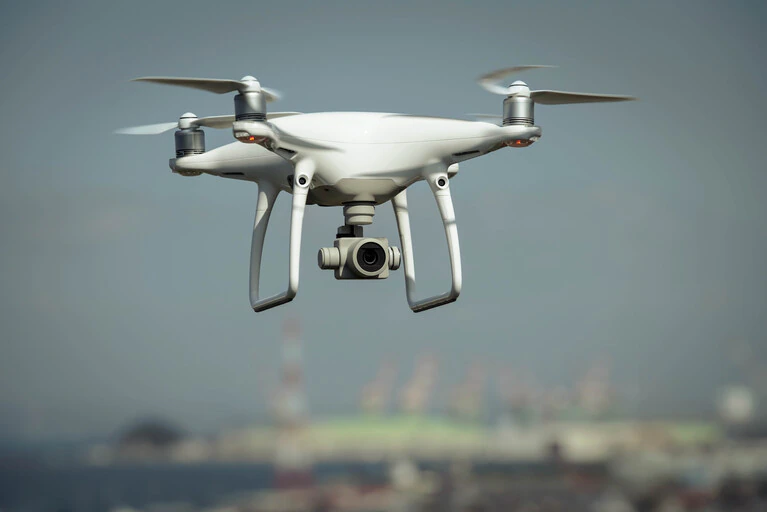Harnessing the Sun: Exploring the Benefits of Solar-Powered Drones in Disaster Relief
The use of solar-powered drones in disaster relief is a promising way to provide aid to those in need. By employing this technology, humanitarian organizations can better respond to natural disasters or other crises, as well as provide long-term assistance to affected communities. Solar-powered drones offer a number of advantages in terms of speed, cost efficiency, and accuracy, allowing them to be utilized in a wide array of scenarios.
The first benefit of solar-powered drones is their ability to quickly deliver aid to those in need. Unmanned aerial vehicles (UAVs) can quickly reach areas that are hard to access by ground, allowing them to deliver supplies or aid more quickly than traditional methods. This is especially important in disaster relief scenarios, as time is often of the essence when providing aid. Additionally, solar-powered drones can be used to survey an affected area and assess the magnitude of the damage. This allows relief organizations to better prepare for the arrival of aid and tailor their response to the specific situation.
Solar-powered drones are also cost-effective and energy-efficient. Unlike traditional aircraft, UAVs do not require fuel, and their solar panels can be used to generate the electricity needed to power their systems. This reduces both the cost of operation and the environmental impact of the relief efforts, making solar-powered drones a more sustainable option.
Finally, solar-powered drones are extremely accurate. By utilizing sophisticated imaging and navigation technologies, these UAVs can precisely deliver aid or supplies to the exact location needed. This is particularly important in remote or hard-to-reach areas, where traditional methods of delivery may not be as effective.
Solar-powered drones offer a number of advantages in terms of speed, cost efficiency, and accuracy, making them an invaluable tool in disaster relief efforts. By utilizing this technology, humanitarian organizations can better respond to natural disasters or other crises, as well as provide long-term assistance to affected communities.
Harnessing the Sun: Solar-Powered Technology for Sustainable Energy Solutions
Harnessing the sun’s energy is an increasingly popular way to generate renewable energy and help fight climate change. Solar-powered technology offers a range of sustainable energy solutions that are both efficient and cost-effective.
Sunlight is a form of energy that can be converted into electricity through a process called photovoltaic (PV) conversion. PV cells work by absorbing the sun’s rays and converting them into usable electricity, which can be used for everyday activities. This electricity can be used to power homes, businesses, and other facilities. Solar-powered technology is also being used to produce clean, renewable energy for large-scale power grids.
The benefits of using solar-powered technology are numerous. It is a clean, renewable energy source that does not emit greenhouse gases or other pollutants. It is also cost-effective, as the initial installation costs are often recouped in a few years through energy savings. Solar-powered technology also offers a reliable, uninterrupted source of energy, as it does not rely on traditional energy sources such as oil and gas.
Solar-powered technology is increasingly being deployed in a variety of applications. It can be used to power homes and businesses, providing a reliable source of electricity. Solar-powered products such as solar panels, solar water heaters, and solar-powered lights are becoming more popular. Solar-powered technology can also be used to power electric vehicles, making them more efficient and reducing their environmental footprint.
In addition, solar-powered technology can be used to generate electricity in remote areas where there is limited access to traditional energy sources. In developing countries, it can be used to provide clean, reliable energy to those who would otherwise not have access to electricity.
In conclusion, solar-powered technology provides an efficient, cost-effective, and sustainable solution to the global energy crisis. It is an increasingly popular way to generate renewable energy, reduce our dependence on fossil fuels, and help fight climate change. As solar-powered technology continues to evolve, it will become an even more viable option for meeting our energy needs.
Harnessing the Sun: How Solar-Powered Drones Are Changing Disaster Relief
Gone are the days when the only way to respond to a natural disaster was with teams of people on the ground. In recent years, a new technology has emerged that is revolutionizing disaster relief efforts: solar-powered drones.
Solar-powered drones offer a number of advantages over traditional methods of disaster relief. For one, they can access areas that are otherwise inaccessible to humans. This is due to their ability to fly over rugged terrain, hazardous conditions, or otherwise dangerous areas. Additionally, solar-powered drones can provide real-time data that can be used to make critical decisions in the midst of a disaster. The data they provide, such as aerial images and videos, can be used to assess the extent of the damage and the area affected by the disaster.
Solar-powered drones are also more efficient and cost-effective than traditional methods. They are able to remain airborne for extended periods, allowing them to cover large areas quickly and efficiently. They also require less manpower, which makes them a more cost-effective option for disaster relief efforts.
Solar-powered drones are not only useful for disaster relief efforts, but they are also being used in other fields, such as agriculture, construction, and search-and-rescue operations. In addition, they can be used to monitor infrastructure, such as roads and bridges, for signs of damage or wear-and-tear.
As solar-power drones become more advanced, their potential applications are growing. They are quickly becoming an invaluable tool in disaster relief efforts, and are likely to continue to revolutionize the way we respond to natural disasters in the years to come.
Harnessing the Sun: A Closer Look at Solar-Powered Drones in Disaster Relief
In recent years, the use of solar-powered drones in disaster relief operations has become increasingly widespread. As the world faces a growing number of natural disasters, the need for fast and efficient relief efforts is becoming ever more pressing. Solar-powered drones are perfectly suited to meet this need, offering the potential to quickly and safely deliver relief materials to areas that are otherwise inaccessible.
Solar-powered drones offer a number of advantages over traditional relief operations, such as helicopters and boats. For one, they are much less expensive to operate than these traditional methods, as they have no fuel costs. Additionally, they are much more agile and can easily access difficult-to-reach areas. Finally, they are significantly quieter than helicopters, making them a more desirable option in densely populated areas.
Solar-powered drones can be equipped with a variety of payloads, depending on the needs of the relief mission. For instance, they can carry medical supplies, food, and other materials directly to disaster victims. They can also be used to deliver communications equipment, allowing those affected by disasters to stay in contact with the outside world. Finally, solar-powered drones can be used to survey the area, providing valuable information about the extent of the damage.
In order for solar-powered drones to be effective in disaster relief operations, they must be capable of withstanding the extreme weather conditions that often accompany natural disasters. Fortunately, the technology has advanced to the point where solar-powered drones are now capable of flying in heavy rain, wind, and even snow. In addition, they are designed to be lightweight and durable, ensuring maximum efficiency and reliability.
The use of solar-powered drones in disaster relief operations is still relatively new, but the potential for this technology is immense. By providing fast, efficient, and cost-effective relief services, solar-powered drones can be a valuable asset in the fight against the devastating consequences of natural disasters.
Harnessing the Sun: The Impacts of Solar-Powered Technology on Disaster Relief
As the world continues to grapple with the effects of climate change, natural disasters are becoming increasingly common. In light of this, effective disaster relief has become more important than ever before. Solar-powered technology has the potential to revolutionize the way in which disaster relief is administered, providing an unprecedented level of support for affected communities.
The most obvious benefit of solar-powered technology is the fact that it is independent of traditional energy sources. This means that solar-powered technology is capable of providing light, power, and other essential services, even if the local infrastructure has been damaged by the disaster. Solar-powered technology is also highly mobile and can be deployed quickly, potentially providing vital help to affected communities in a matter of hours.
Solar-powered technology is also highly efficient, capable of providing a reliable source of energy with minimal maintenance. This is especially important when it comes to disaster relief, as it allows relief workers to focus their efforts on providing aid to those who need it most. Additionally, solar-powered technology is clean and renewable, making it a sustainable choice for those seeking to reduce their dependence on fossil fuels.
Finally, solar-powered technology can provide a range of other services that can be invaluable in disaster relief. For example, solar-powered water purification systems can provide clean drinking water to affected communities, while solar-powered communication networks can provide vital links to the outside world.
In short, solar-powered technology has the potential to revolutionize the way in which disaster relief is administered. By providing an independent source of energy, essential services, and other invaluable support, solar-powered technology can give affected communities a much-needed lifeline when they need it most.





